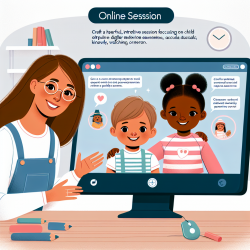Introduction
In today's digital age, the internet is an integral part of adolescents' lives. While it offers numerous educational and social benefits, excessive internet use can lead to addiction, adversely affecting young individuals' mental health and academic performance. A recent study titled Personal characteristics related to the risk of adolescent internet addiction: a survey in Shanghai, China provides valuable insights into the personal factors contributing to adolescent internet addiction (AIA). This blog aims to help practitioners leverage these findings to improve their interventions and outcomes for children at risk of AIA.
Understanding the Data
The Shanghai study surveyed 5,122 adolescents across 16 high schools, revealing that 8.8% were identified as internet addicts. The research identified several personal characteristics associated with AIA, including gender, academic achievement, and online behaviors. Key findings include:
- Gender: Males were more likely to develop AIA compared to females.
- Academic Achievement: Students with poor academic performance were at a higher risk of AIA.
- Online Behavior: Excessive internet use, especially for gaming and real-time chatting, was linked to higher AIA risk.
Implications for Practitioners
Understanding these factors allows practitioners to tailor interventions more effectively. Here are some strategies based on the study's findings:
- Targeted Interventions: Focus on high-risk groups, such as male students and those with poor academic performance, by offering counseling and support to manage internet use.
- Parental Involvement: Educate parents about the signs of AIA and encourage them to monitor their children's internet usage, especially on weekends.
- Promote Healthy Online Habits: Encourage adolescents to balance their online activities with offline pursuits, reducing time spent on gaming and chatting.
Encouraging Further Research
While the Shanghai study provides a comprehensive overview of AIA risk factors, further research is essential to explore additional variables and cultural contexts. Practitioners are encouraged to contribute to this field by conducting studies that examine the impact of family dynamics, peer influence, and socio-economic factors on AIA.
Conclusion
The findings from the Shanghai study underscore the importance of data-driven approaches in addressing adolescent internet addiction. By understanding the personal characteristics that contribute to AIA, practitioners can develop more effective strategies to support at-risk youth. Continued research and collaboration will be crucial in mitigating the impact of internet addiction on adolescents' lives.
To read the original research paper, please follow this link: Personal characteristics related to the risk of adolescent internet addiction: a survey in Shanghai, China.










